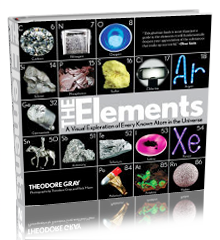K-T Boundary Clay. | |||
| Sample Image | Spin Video | QuickTimeVR Rotation | |||
| K-T Boundary Clay. The K-T boundary clay is is found in thin layers all over the world at sedimentary levels that indicate it is the same age everywhere: About 65 million years ago. This is the boundary between the Cretaceous (K for some reason) and the Tertiary (T for obvious reasons) periods, and also the time at which there was a mass extinction. That such a thin layer of similar material should be found all over the globe is strange, but what's even stranger is that it is always highly enriched in iridium compared everything around it. It's as if something dumped a huge quantity of iridium on the earth and spread it around in some kind of giant explosion. That something was almost certainly a large (ca. 10km diameter) chondritic meteorite, a type known to contain very high levels of iridium compared to the earths crust. All the evidence points to such an object hitting the Yucatan peninsula of Mexico a the same time the clay was deposited and the dinosaurs became extinct. And the dark layer in this rock is a tiny bit of that iridium-rich clay material. Source: Jensan Scientifics Contributor: Theodore Gray Acquired: 8 April, 2009 Text Updated: 9 April, 2009 Price: Anonymous Size: 1.5" Purity: <1% | |||
|

